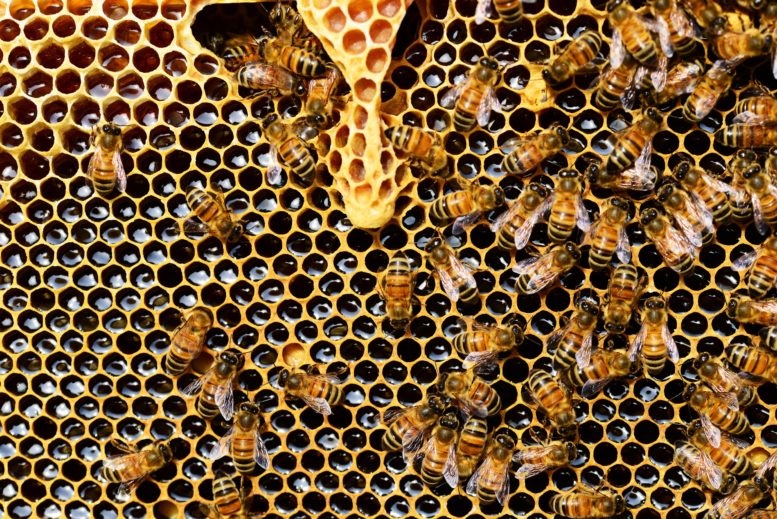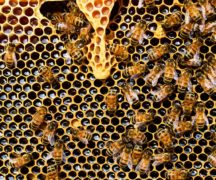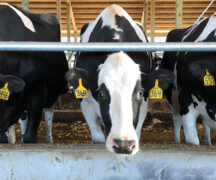By JULIE CARLE
BG Independent News
OB1 bees may become a bee of the future in Ohio—able to reduce mite infestations in hives and enhance long-term bee sustainability.
Among the bee research underway at Central State University is an area that addresses hive health through bee genetics. Each year Ohio beekeepers lose nearly 60-70% of their bees over winter, said Michelle Wallace, Central State’s agriculture and natural resource extension educator for Northwest Ohio.
As the featured presenter at CIFT’s May agribusiness forum, Wallace said, “There are many causes for hive colony loss, but the main cause is a parasitic mite called Varroa destructor.”
The tiny mites cause colony losses by feeding on the bee pupae and creating defects in bee development. The mites also transmit viruses into the colonies that are detrimental to the health of the colony.
According to Wallace, one solution being worked on at Central State by Associate Professor Hongmei Li-Byarlay is breeding OB1, or Ohio Mite Biters No. 1. The idea behind the breeding program is to produce worker bees that are better groomers or do a better job of keeping pests out and the hive clean, which is essential to hive health.
“Bee hygienics isn’t learned, it’s inherited,” Wallace said. Worker bees with slightly smaller mandibles are better groomers. Currently, about 10% possess the fully hygienic trait. The smaller mandibles give the bees a better ability to bite off parts of the mites, impacting their ability to attach to the brood or adult bees.
Using feral bees rather than domesticated bees, Li-Byarlay’s research in conjunction with Purdue University is working to breed the biting trait into a larger percentage of a hive’s bees. They are collecting mites to determine hives that have a large percentage of mite-biter bees, Wallace explained. They hope to collect drones from those hives and use the males to artificially inseminate the queen as a way to introduce new strains of bees into the hive.
In nature, it takes 15 to 20 drones to inseminate a queen. Fifty to 60 drones and a tiny syringe are needed for the artificial insemination process.
“Ohio beekeepers can get involved in the research to help solve the problem by improving mite-resistant, high-grooming and mite-biting genetics,” she said. They can help by sending the hive’s bottom boards before the hives are treated with pesticides. The bottom boards should be wrapped in plastic wrap, or mites can be collected in small plastic cups with lids, like those used for condiments at restaurants. Researchers will count the number of mites which have been bitten to determine if the hive has a high number of mite-biters.
Samples can be sent to Dr. Hongmei Li-Byarlay, Central State University, 1400 Brush Row Road,
PO Box 1004, Wilberforce, OH 45384.
Getting involved with genetic research could help reduce the need for managing bees with chemicals, reduce the potential for growing chemical miticide-resistance problems and enhance long-term bee sustainability. Bees fend for themselves and reduce the mite population.
“Bees are faced with so many pests—diseases, pesticides and the mites—it’s not what keepers are doing that is creating the problems,” Wallace said. “They can’t prevent mites, but the best thing they can do to minimize their damage to beehive health is to have a diversity of flowering plants near the hives. A healthier environment is good for the bees, so the more pollen and nectar-producing plants, the better for the bees to manage their hives.”





